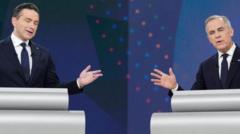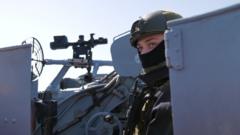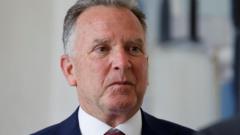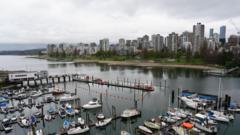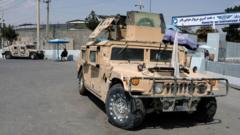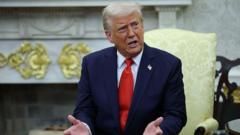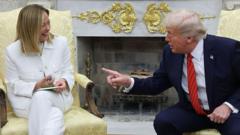Prime Minister Mark Carney faced significant scrutiny from his rivals as Canada’s political leaders convene to discuss the ramifications of U.S. President Trump's threats, highlighting a lack of concrete strategies to counteract potential crises.
Tensions Rise in Canada’s Election Debate Amid U.S. Threats

Tensions Rise in Canada’s Election Debate Amid U.S. Threats
Political leaders grapple with the looming shadow of President Trump's aggressive policies during a crucial election debate.
In a heated election debate held on Thursday in Montreal, four of Canada’s leading political figures addressed the pressing challenges posed by U.S. President Trump’s threats, including potential tariffs and demands for Canada's annexation. The debate occurred against a backdrop of escalating tensions surrounding American political maneuvers, which have dramatically impacted the Canadian political landscape.
Prime Minister Mark Carney, who recently took office after leading the Liberal Party to a surprising polling turnaround, came under fire from his rivals, particularly Pierre Poilievre, the Conservative Party leader who had previously dominated in polls. Alongside him were Jagmeet Singh of the New Democratic Party and Yves-François Blanchet of the Bloc Québécois, a party dedicated to advocating for Quebec's independence.
Despite the seriousness of the challenges posed by Trump, the debate revealed a glaring absence of specific strategies from all candidates on how to effectively deal with the U.S. President. While they collectively acknowledged the gravity of the situation, including the notion that Trump's policies represent a crisis for Canada, they offered little more than vague assurances of strong negotiations to assert Canadian sovereignty.
The lack of actionable plans heightened concerns over Canada’s future, leaving voters to wonder who might effectively safeguard their interests in a precariously shifting geopolitical climate. As the federal election on April 28 approaches, the pressure is on candidates to clarify their positions and outline their proposed responses to the threats at hand.


